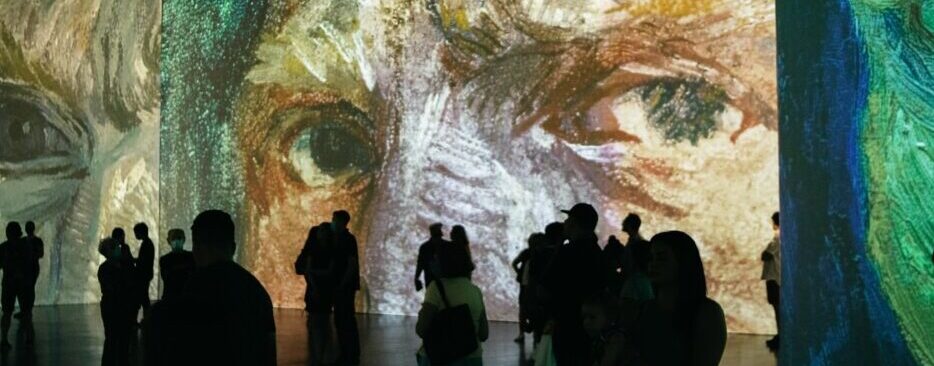Van Gogh’s ‘Irises’: a reflection of solitude, mental health, and creativity
Irises, one of Van Gogh’s most well-known paintings, explores the artist’s life in May 1889, as well as his crippling isolation in Saint Remy – a mental asylum. I first saw this painting in Amsterdam in September 2022 when I went to the Van Gogh museum with a group of friends, and just walking across the beautiful museum, I could feel the artist’s personality expressed in his courageous use of light and colour. His canvases captivated my attention and mesmerised me; ultimately making me wonder, how has Van Gogh managed to create such powerful paintings that still resonate with the younger generation?
The inspiration for this canvas was the garden of the mental asylum of Saint Remy.
Upon walking through the museum, I was instantly drawn to the painting Irises as the simplicity of a canvas covered in blue and purple flowers puzzled me. Researching a bit more about Van Gogh ’s life led me to discover that the inspiration for this canvas was the garden of the mental asylum of Saint Remy. Van Gogh was in depths of depression, before he went to Saint Remy. In many letters to his brother Vincent spoke about his troubles and the darkness that he felt – his mental episodes had especially piqued in 1889 with the famous incident of when he cut off his ear. Thus, due to his mental instability, aggravated by this incident, his brother Theo had admitted him to a mental asylum where Van Gogh felt excluded from reality, without any care or love.
This caused Van Gogh to use paintings as a distraction from his inner challenges, and subsequently Irises was his first subject at the asylum – it is no wonder then that the painting is strongly associated with the garden in Saint-Remy. In addition, the composition of this canvas depicts the Irises in a colossal scale, which was inspired by a form of Japanese art called ‘Ukiyo-e’. The English translation for this is “pictures of the floating world,” which refers to the broad subjects depicted in this type of artwork. In fact, the hard work Van Gogh put into Irises in Saint Remy’s served as a form of therapy for him, and, as he puts it, “the lightning conductor for my illness.”
Following Irises, Van Gogh painted a diverse range of paintings in Saint Remy, to which I later discovered in the Van Gogh museum was approximately 150 paintings. Sometimes, he painted the garden as a whole, sometimes he created close-ups of flowers, plants, and all kinds of small creatures he found there. Painting was the best remedy for his psychiatric disorder, yet he couldn’t work during attacks and indeed wasn’t allowed to. Doing nothing was unbearable for Vincent. This spoke to me as a young person. I am filled with energy and somehow living through the excitement of life, I felt really connected with the lavishing use of colour and background in Van Gogh ‘s painting.
Mental health issues could be expressed through art.
We can see similarities in Van Gogh’s position to that of millions during the coronavirus pandemic, who became isolated from their typical social activities and suffered with mental health issues. I was therefore very moved to see how someone’s isolation, and mental health issues could be expressed through art – on one hand, to channel his anguish, and on the other, to find peace in the midst of chaos. It was truly moving to see so much beauty in Irises.

Comments (3)
I’d recommend reading the book “The Yellow House: Van Gogh, Gauguin, and Nine Turbulent Weeks in Arles” if you haven’t done so already.
And speaking of turbulence, there’s an interesting article “Arts & Culture: Turbulence in The Starry Night” speaking of his time in the Asylum.
Fascinating how art done almost 160 years ago can still help young people to express their emotions.
Great work!!!